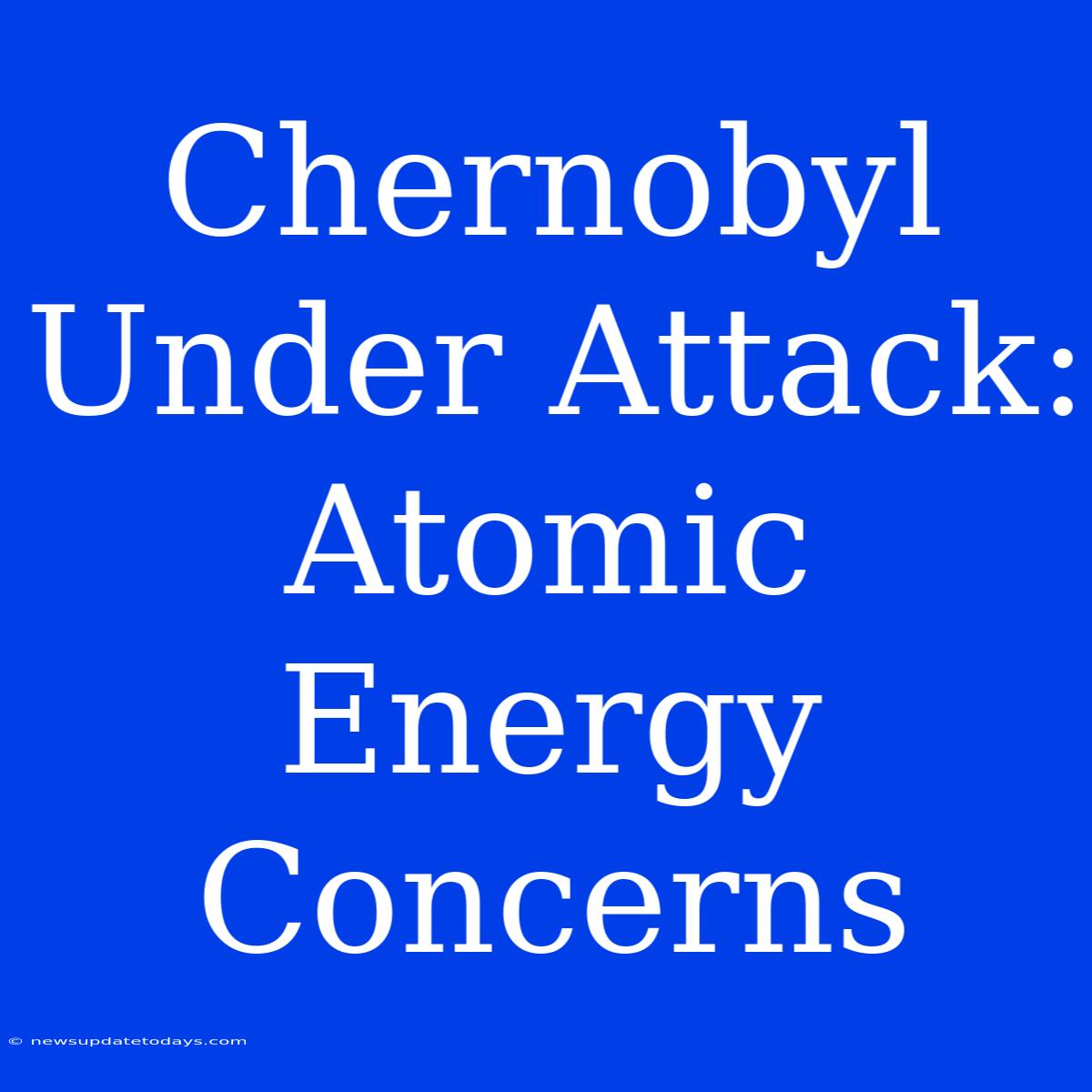Chernobyl Under Attack: Heightened Atomic Energy Concerns
The recent attacks on the Chernobyl nuclear power plant have reignited global concerns about the safety and security of nuclear facilities, particularly in conflict zones. This event underscores the critical need for robust security measures and international cooperation to prevent potential catastrophes. The implications extend far beyond Ukraine, highlighting vulnerabilities in global atomic energy infrastructure.
The Chernobyl Attack: A Wake-Up Call
The seizure of the Chernobyl Exclusion Zone by Russian forces in the early days of the 2022 Ukraine invasion sent shockwaves through the international community. While the immediate impact on the plant's reactors appeared limited, the disruption to monitoring systems and the presence of military equipment within the highly contaminated area posed significant risks. Reports of elevated radiation levels, though disputed, fueled fears of a larger-scale disaster. The incident forcefully demonstrated the vulnerability of even decommissioned nuclear facilities to the chaos of armed conflict.
Heightened Risks: Beyond Chernobyl
The Chernobyl attack isn't an isolated incident. Other nuclear facilities located in politically unstable regions or conflict zones face similar, if not greater, risks. The potential consequences of an attack on an active nuclear power plant are catastrophic, potentially leading to widespread radiation contamination, mass evacuations, and long-term health consequences for millions. The threat is not just limited to direct attacks; the disruption of power grids or cooling systems could also trigger a major accident.
The Importance of International Cooperation and Security
Strengthening the security of nuclear facilities globally requires a concerted effort from international organizations, national governments, and the nuclear industry itself. This includes:
- Enhanced Physical Security: Investing in robust physical security measures at all nuclear facilities, including improved perimeter defenses, advanced surveillance systems, and trained security personnel.
- Improved Emergency Response Plans: Developing and regularly testing comprehensive emergency response plans to deal with potential accidents or attacks, including international collaboration on evacuation strategies and radiation monitoring.
- International Inspection and Verification: Strengthening international mechanisms for inspecting and verifying the safety and security of nuclear facilities, to ensure transparency and prevent the proliferation of nuclear weapons.
- Global Nuclear Safety Standards: Enhancing global nuclear safety standards and promoting their adoption by all countries with nuclear facilities, to minimize the risk of accidents.
- Addressing Root Causes of Conflict: Ultimately, preventing future attacks on nuclear facilities necessitates addressing the underlying geopolitical conflicts that create instability and increase the risk of such attacks.
The Long-Term Implications
The Chernobyl attack serves as a stark reminder of the potential consequences of neglecting nuclear safety and security. The long-term implications extend far beyond the immediate vicinity of the plant, encompassing environmental contamination, public health concerns, and international relations. The world needs to learn from this experience and take proactive steps to mitigate the risks associated with atomic energy in the face of growing global instability. This requires not only improved security but also a renewed commitment to international cooperation and a frank assessment of the vulnerabilities within the current system.

